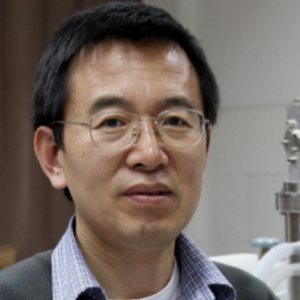Matrix Infrared Spectra and Molecular Structures of Reactive Intermediates
A special issue of Molecules (ISSN 1420-3049).
Deadline for manuscript submissions: closed (30 November 2018) | Viewed by 3426
Special Issue Editor
Interests: metal hydrides; hydrogen bridge bonding; matrix isolation; infrared spectroscopy; computational chemistry; Raman spectroscopy; hydrogen energy chemistry and materials; hydrogen evolution reaction
Special Issue Information
Dear Colleagues,
The reactive intermediates generated in chemical reactions, such as free radicals, unstable ions, and activated complexes, are short-lived and highly reactive. Identification of such chemical species is important to help understand chemical reaction mechanism. The reactive intermediates can be isolated in low temperature matrix, which can be identified by infrared spectroscopy. Such MI-IR (matrix isolation–infrared spectroscopy) technique goes back for many years, which is continuously used to identify the reactive species. The state-of-the-art theoretical calculations are performed to confirm the assignments of matrix infrared spectra and explore reaction mechanism and nature of bonding. This Special Issue will focus on recent progress of matrix isolated reactive intermediates, both experimentally and theoretically.
Prof. Xuefeng Wang
Guest Editor
Manuscript Submission Information
Manuscripts should be submitted online at www.mdpi.com by registering and logging in to this website. Once you are registered, click here to go to the submission form. Manuscripts can be submitted until the deadline. All submissions that pass pre-check are peer-reviewed. Accepted papers will be published continuously in the journal (as soon as accepted) and will be listed together on the special issue website. Research articles, review articles as well as short communications are invited. For planned papers, a title and short abstract (about 100 words) can be sent to the Editorial Office for announcement on this website.
Submitted manuscripts should not have been published previously, nor be under consideration for publication elsewhere (except conference proceedings papers). All manuscripts are thoroughly refereed through a single-blind peer-review process. A guide for authors and other relevant information for submission of manuscripts is available on the Instructions for Authors page. Molecules is an international peer-reviewed open access semimonthly journal published by MDPI.
Please visit the Instructions for Authors page before submitting a manuscript. The Article Processing Charge (APC) for publication in this open access journal is 2700 CHF (Swiss Francs). Submitted papers should be well formatted and use good English. Authors may use MDPI's English editing service prior to publication or during author revisions.
Keywords
- Reactive intermediates
- Infrared spectroscopy
- Matrix isolation
- Reaction mechanism
- Computational chemistry
- Chemical bonding
- Molecular structure






